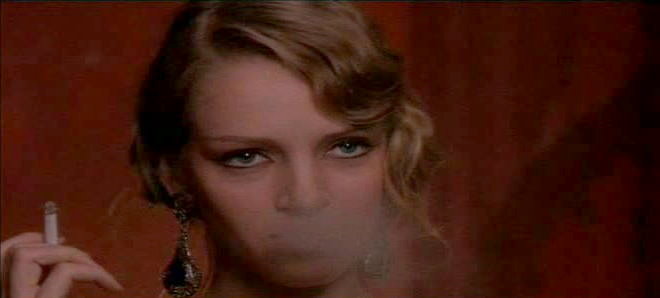The Tropic of Cancer, also referred to as the Northern tropic, is the circle of latitude on the Earth that marks the most northerly position at which the Sun may appear directly overhead at its zenith. This event occurs once per year, at the time of the June solstice, when the Northern Hemisphere is tilted toward the Sun to its maximum extent. So, it made sense for Miller to write the biography of his wife whose name is "June," and associated it to the Tropic of Cancer. The imaginary line is called the Tropic of Cancer because when it was named, the Sun was in the direction of the constellation Cancer (Latin for crab) at the June solstice. However, this is no longer true due to the precession of the equinoxes resulting in an annual drift of this imaginary line of latitude. According to International Astronomical Union boundaries, the Sun now is in Taurus at the June solstice. So, a modern day's name for this book would have to be "Tropic of Taurus!" I like Cancer better. Of course, you know about the Tropic of Capricorn in the Southern hemisphere. Let's keep that for another blog in the future.
There are many very interesting histories about this famous book. Tropic of Cancer was first published in 1934 by the Obelisk Press in Paris, France. Its publication in 1961 in the United States by Grove Press led to an obscenity trial that was one of several that tested American laws on pornography in the 1960s.
While famous for its frank and often graphic depictions of sex, the book is also widely regarded as an important masterpiece of 20th century literature. In 1998, the Modern Library ranked Tropic of Cancer 50th on its list of the 100 best English-language novels of the 20th century. Time magazine included the novel in its TIME 100 Best English-language Novels from 1923 to 2005.
The book was distributed by Frances Steloff at her Gotham Book Mart, in defiance of censorship pressures.
In 1964, the U.S. Supreme Court, in Grove Press, Inc. v. Gerstein, cited Jacobellis v. Ohio (which was decided the same day) and overruled state court findings of obscenity.
Again, in this clip, because of June's presence, Philip Kaufman inserted Debussy's "Pour l'Egyptienne" motif in the background.




No comments:
Post a Comment